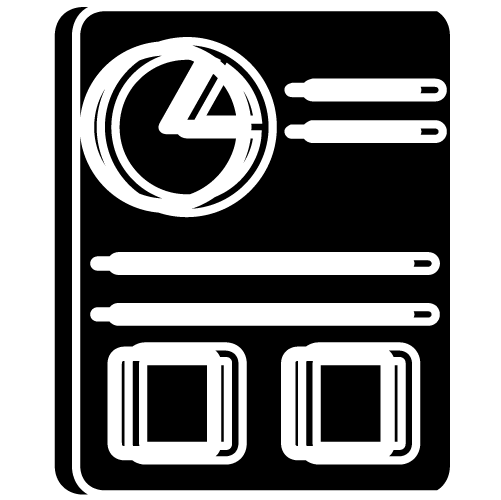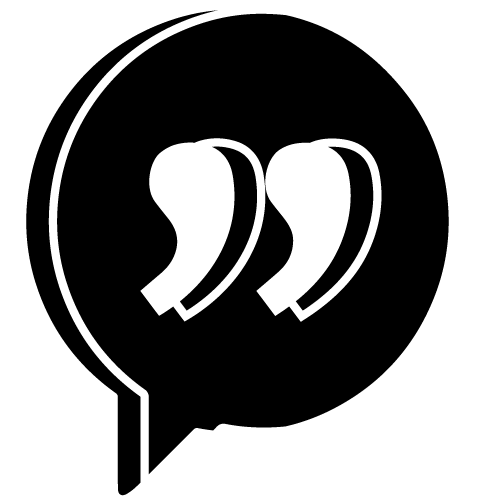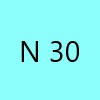Self-made digital materials for teaching space in teacher training: a didactic proposal
DOI:
https://doi.org/10.7203/realia.30.24975Keywords:
Self-made digital materials, Geographic space, Early Childhood Education Abstract
Abstract
Today it is necessary for trainee teachers to develop their digital competence in order to be able to meet the educational needs of their future students. Among the many ways of working on this competence is that which is related to the self-construction of digital materials for educational use. In this sense, we present a didactic proposal that aims to promote digital competence in trainee teachers in the Early Childhood Education Degree at the University of Salamanca. Based on research and independent work, students must design a didactic proposal that allows them to teach a series of contents related to geographic space using self-built digital materials as didactic tools. The aim is to test the ability of future teachers to generate useful digital materials, as well as to work on digital competence as a means of improving comprehensive knowledge. Conducting a pretest and posttest has allowed us to quantify the evolution of the learning of the theoretical content to be addressed. In a sample of 52 subjects, all students experienced an increase in their grades following the implementation of this didactic proposal. The students’ average grade of 6 points out of 10 in the second test was higher in comparison with the first. Thus, it can be determined that the didactic proposal offered here yields positive results in terms of learning content related to geographical space.
 Downloads
Downloads
 References
References
Barac, K., Prestridge, S., y Main, K. (2017). Stalled innovation: examining the technological, pedagogical and content knowledge of Australian university educators. Australian Educational Computer, 32(1), 32–32. Descargado de https://journal.acce.edu.au/index
.php/AEC/article/view/140
Barone, D. A. C., Zaro, M. A., Musacchio, C., y Moraes, A. (2016). Audio and Video Media in Teacher Training: Deterritorialization in Education. Creative Education, 7 , 1056–1068. http://dx.doi.org/10.4236/ce.2016.77110
Cabero, J. (2014). La Formación del Profesorado en TIC: Modelo TPACK. Sevilla: Secretariado de Recursos Audiovisuales y Nuevas Tecnologías.
Cabero, J. (2016). Tendencias educativas para el Siglo XXI. Madrid: CEF-Udima.
Cabero, J. (2017). La formación en la era digital: ambientes enriquecidos por la tecnología. REGIES: Revista de Gestión de la Innovación en Educación Superior, 2(2), 41–64. Descargado de https://dialnet.unirioja.es/descarga/articulo/7306669.pdf
Cabero, J., Llorente-Cejudo, C., y Puente, A. P. (2009). Alfabetización digital: un estudio en la Pontificia Universidad Católica Madre y Maestra.
CE. (2018). Recomendación del Consejo de 22 de mayo de 2018 relativa a las competencias clave para el aprendizaje permanente. Descargado de https://eur-lex.europa.eu/legal-content/ ES/TXT/PDF/?uri=CELEX:32018H0604(01)&qid=1632400427304&from=EN
CE. (2021). Plan de Acción de Educación Digital. Descargado de https://education.ec.europa.eu/es/focus-topics/digital-education/action-plan
Ciriza-Mendívil, C. D., Mendioroz, A., y Hernández, J. M. (2022). Technological Pedagogical Content Knowledge: Implementation of a Didactic Proposal for Preservice History Teachers. Frontiers in Education, 852801–852801. https://doi.org/10.3389/feduc.2022.852801
Clará, M., y Majós, T. M. (2010). El conocimiento práctico: cuatro conceptualizaciones constructivistas de las relaciones entre conocimiento teórico y práctica educativa . Journal for the Study of Education and Development, Infancia y Aprendizaje, 33(2), 131–141.https://doi.org/10.1174/021037010791114625
Claro, M., Salinas, A., Cabelo-Hutt, T., San-Martín, E., Preiss, D. D., Valenzuela, S., y Jara,I. (2018). Teaching in a Digital Environment (TIDE): defining and measuring teachers´capacity to develop students´digital information and communication skills. Computers and Education, 121, 162–174. https://doi.org/10.1016/j.compedu.2018.03.001
Claros-Gómez, I. D., y Cobos-Pérez, R. (2013). Del video educativo a objetos de aprendizaje multimedia interactivos: un entorno de aprendizaje colaborativo basado en redes sociales. Tendencias Pedagógicas, 22, 59–72. Descargado de https://revistas.uam.es/tendenciaspedagogicas/article/view/2042
Coll, C. (2010). La centralidad de la práctica y la dualidad conocimiento teórico/conocimiento práctico. Journal for the Study of Education and Development, 33(2), 141–159. https:// doi.org/10.1174/021037010791114553
Coll, C. (2015). La personalització de l’aprenentatge escolar. El què, el per què i el com d’un repte indefugible. Descargado de https://fundaciobofill.cat/uploads/docs/5/l/j/3/p/c/n/4/ h/personalitzacio_anuari2015cap1.pdf
Coll, C. (2018). Personalización del aprendizaje. Barcelona: Editorial Graó.
Coticone, S. (2013). Utility of Self-Made Crossword Puzzles as an Active Learning Method to Study Biochemistry in Undergraduate Education. Journal of College Science Teaching, 42(4), 33–37.
Engel-Rocamora, A., y Coll, C. (2022). Entornos híbridos de enseñanza y aprendizaje para promover la personalización del aprendizaje. RIED-Revista Iberoamericana de Educación a Distancia. RIED-Revista Iberoamericana de Educación a Distancia, 25(1), 225–242.https://doi.org/10.5944/ried.25.1.31489
Fahadi, M., y Shahadat-Hossain, M. (2022). Technology-enhanced teaching in engineering education: Teachers’ knowledge construction using TPACK framework. International Journal of Instruction, 15(2), 519–542. Descargado de http://files.eric.ed.gov/fulltext/ EJ1341663.pdf
Fernández-Río, J. (2018). Creación de vídeos educativos en la formación docente: un estudio de caso. Revista Electrónica Interuniversitaria de Formación del Profesorado, 21, 115–127. https://doi.org/10.6018/reifop.21.1.293121
Fernández-Río, J., Calderón, A., Méndez-Giménez, A., y Rolim, R. J. (2014). Teoría Construccionista del Aprendizaje en Formación del Profesorado. Perspectivas del alumnado y el profesorado desde la investigación cuantitativa y cualitativa. Profesorado, Revista de Curriculum y Formación del Profesorado, 18(3), 213–228.Descargado de https://revistaseug.ugr.es/index.php/profesorado/article/view/19334
Fernández-Río, J., y Méndez-Giménez, A. (2012). Innovative practice through the use of self-made materials. The cooperative model in Spain. En B. Dyson y A. Casey (Eds.), Cooperative Learning in Physical Education (pp. 42–56). Routledge.
Fernández-Río, J., y Méndez-Giménez, A. (2013). Articulando conocimiento teórico y práctica educativa. Análisis de los efectos del material autoconstruido en las creencias de futuros docentes. Infancia y Aprendizaje, 36(1), 61–75. https://doi.org/10.1174/ 021037013804826528
Gómez-Carrasco, C. J., Rodríguez-Medina, J., Chaparro-Sáinz, A., y Alonso-García, S. (2022). Recursos digitales y enfoques de enseñanza en la formación inicial del profesorado de Historia. Educación XXI , 25(1), 143–170. https://doi.org/10.5944/educxx1.30483
Gómez-Trigueros, I. M. (2016). La inclusión de las tecnologías en la formación inicial del profesorado: una intervención de aula a través del modelo TPACK. Tendencias Pedagógicas(28), 133–152. http://dx.doi.org/10.15366/tp2016.28.010
Haron, M. Z., Zalli, M. M., Othman, M. K., y Awang, M. I. (2021). Examining the teachers’ pedagogical knowledge and learning facilities towards teaching quality. International Journal of Evaluation and Research in Education (IJERE), 10(1), 1–7. http://doi.org/10.11591/ijere.v10i1.20780
Hoban, G., y Nielsen, W. (2014). Generating science discussions through creating a narrated stop-motion animation: The affordances of Slowmotion.Teaching and Teacher Education, 42, 68–78. http://dx.doi.org/10.1016/j.tate.2014.04.007
Jaume-Mayol, J., Perales, F., Negre-Bennasar, F., y Fontanet-Nadal, G. (2019). El diseño web y material didáctico accesible en la enseñanza universitaria. RED. Revista de Educación a Distancia, 59(6), 1–19. https://doi.org/10.6018/red/60/06
Johnson, L., Adams, S., Cummins, S., Estrada, V., Freeman, A., y Hall, C. (2016). NMC Informe Horizon 2016 Edición Superior de Educación. Descargado de http://www.aprendevirtual.org/centro-documentacion-pdf/2016-nmc-horizon-report-HE-ES.pdf
Koehler, M. J., y Mishra, P. (2005). What happens when teachers design educational technology? The development of technological pedagogical content knowledge. Journal of Educational Computing Research, 32(2), 131–152. http://dx.doi.org/10.2190/ 0EW7-01WB-BKHL-QDYV
Lee, M., y Tsai, C. (2010). Exploring teachers’ perceived self efficacy and technological pedagogical content knowledge with respect to educational use of the World Wide Web. Instructional Science, 38, 1–21. https://doi.org/10.1007/s11251-008-9075-4
Méndez-Giménez, A. (2018). El enfoque baso en autoconstrucción de materiales. El vídeo- tutorial como estrategia de enseñanza para futuros docentes. Retos, 34, 311–316. https://doi.org/10.47197/retos.v0i34.63634
Méndez-Giménez, A., Cecchini, J. A., y Fernández-Río, J. (2017). Efecto del material autoconstruido en la actividad física de los niños durante el recreo. Revista Saúde Publica, 51(58), 1–7. http://dx.doi.org/10.1590/S1518-8787.2017051006659
Mills, R., Tomas, L., y Lewthwaite, B. (2019). The impact of students-constructed animation on middle school students´learning about plate tectonics. Journal of Science Education and Technology, 28, 165–177. https://doi.org/10.1007/s10956-018-9755-z
Mishra, P., y Koehler, M. (2006). Technological Pedagogical Content Knowledge: A Framework for Teacher Knowledge. Teachers College Record, 108, 1017–1054. https:// doi.org/10.1111/j.1467-9620.2006.00684.x
Nielsen, W., Turney, A., Georgiou, H., y Jones, P. (2022). Meaning making with multiple representations: a case study of a preservice teacher creating a digital explanation. Research in Science Education, 52, 871–890. https://doi.org/10.1007/s11165-021-10038-2
Paige, K., Bentley, B., y Dobson, S. (2016). Slowmation: an innovate twenty-first century teaching and learning tool for science and mathematics pre-service teachers. Australian Journal of Teacher Education, 41(2), 1–15. http://dx.doi.org/10.14221/ ajte.2016v41n2.1
Passey, D., Rogers, C., Machell, J., Mchugh, G., y Allaway, D. (2004). The Motivational Effect of ICT on Pupils.
Prats, M. A., Sanmartí, N., y Oró, I. (2020). Evaluar para aprender con el apoyo de herramientas y recursos digitales. Aloma, 38(2), 9–20. https://doi.org/10.51698/ aloma.2020.38.2.9-20
Ramírez-García, A., y González-Fernández, N. (2016). Competencia mediática del profesorado y del alumnado de educación obligatoria en España. Comunicar, 24(49), 49–58. http:// dx.doi.org/10.3916/C49-2016-05
Riesco-González, M. (2008). El enfoque por competencias en el EEES y sus implicaciones en la enseñanza y el aprendizaje. Tendencias Pedagógicas, 13, 79–105. Descargado de https://revistas.uam.es/tendenciaspedagogicas/article/view/1892
Sáez, J. M. (2015). Metodología y tecnologías emergentes en contextos pedagógicos. En A. Medina (Ed.), Innovación de la educación y la docencia (pp. 275–286). Madrid: Ramón Areces.
Salas, C., Moncada, F., Ibáñez, R., y Santana, A. (2021). Recursos digitales complementarios en el texto escolar de lenguaje y comunicación. Estudios Pedagógicos, XLVII (3), 59–78. http://dx.doi.org/10.4067/S0718-07052021000300059
Shulman, L. S. (1986). Those who understand: Knowledge growth in teaching. Educational Researcher, 15(2), 4–14. https://doi.org/10.2307/1175860
Shulman, L. S. (2005). Conocimiento y enseñanza: fundamentos de la nueva reforma. Revista de currículo y formación del profesorado, 9(2), 1–30. Descargado de https://revistaseug.ugr.es/index.php/profesorado/article/view/19743
Tondeur, J., Scherer, R., Baran, E., Siddiq, F., Valtonen, T., y Sointu, E. (2019). Teacher educators as gatekeepers: Preparing the next generation of teachers for technology integration in education. British Journal of Educational Technology, 50(3), 1189–1209. https://doi.org/10.1111/bjet.12748
Wollmann, K., y Lange-Schubert, K. (2022). The Development of Prospective Primary School Science Teachers’ TPaCK Fostered by Innovative Science-Teacher Education. Educ. Sci., 12(381). Descargado de https://www.mdpi.com/2227-7102/12/6/381
Zabalza, M. A. (2003). Las competencias docentes del profesorado universitario. Calidad y desarrollo profesional. Madrid: Narcea.
Additional Files
Published
How to Cite
-
Abstract1199
-
PDF (Español)565
-
Documento complementario (Español)1
-
EPUB (Español)296
-
HTML (Español)597
Issue
Section
License
Authors who publish with this journal agree to the following terms:
- The Universitat de València is the editor of Research in Education and Learning Innovation Archives (REALIA) and retains the copyright of all that is published in the journal, while it allows and favours reuse under a copyleft license.
- The originals published in this journal are – unless otherwise specified – under a Creative Commons License: Attribution-NonComercial-ShareAlike 4.0 International (CC BY-NC-SA 4.0).
Research in Education and Learning Innovation Archives (REALIA) encourages authors to disseminate and give visibility to their research published in this journal. For this, REALIA wishes to inform that:
- Authors retain copyright and grant the journal right of first publication.
- The work is simultaneously licensed under a Creative Commons Attribution License: Attribution-NonComercial-ShareAlike 4.0 International (CC BY-NC-SA 4.0).
- Self-archive: Authors are permitted and encouraged to post their work online (e.g. in institutional repositories or on their website) to promote greater visibility and citation, with an acknowledgement of its first publication in this journal.



